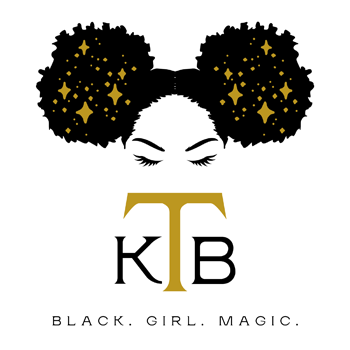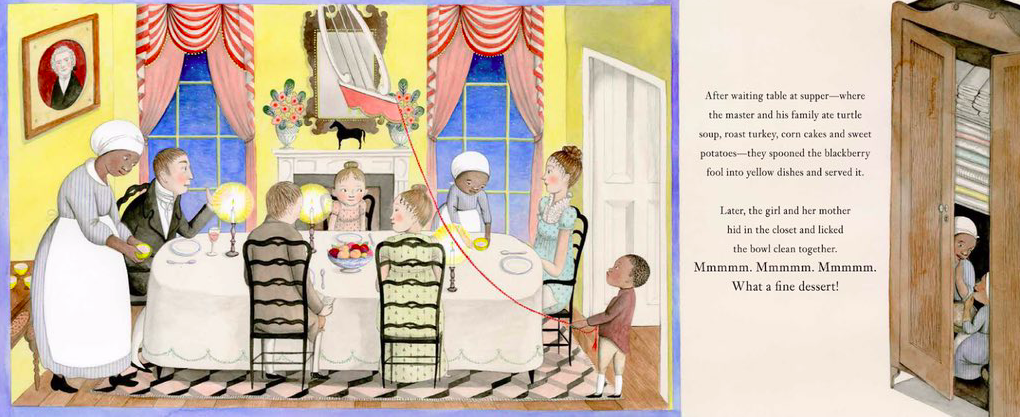This past week author Daniel José Older laid down some hard truth about the illustrations for the children’s book A Fine Dessert1. In the video below he points out that slavery is an “open wound” that America as a whole has been lying about to itself “forever” and that illustrations showing black children as slaves smiling, happy to work hard making fancy food for massa are a problem. Please watch the whole thing, because Daniel really lays it out and what he says is important.
He followed up his panel appearance with a piece in The Guardian that highlights the severe lack of children’s books with African-American people in them.
In 2014, only 5% of the 3,500 children’s books published were about black characters; Christopher Myers has called it “the apartheid of children’s literature”.
This doesn’t even take into account other groups of POC. I suspect that there are very few Latin@, Asian, and Native American characters in kid’s books as well, and that’s just naming three groups.
The article points out that the publishing industry still suffers from the Highlander problem: There Can Be Only One. This has to be addressed, no doubt. At the same time, we should also address the other side of the equation: Authors.
On the panel, Daniel acknowledged that “a book is a creation of a village, just like people are,” and he’s so very right. That means no single entity within the village–editors, publishers, authors, marketers, reviewers, readers–is solely responsible for fixing these systemic problems. However, each entity within the village should do whatever is in their power to effect change2.
We need more authors from diverse backgrounds writing books with characters like them, and we need more of them to get published. We also need more authors from all backgrounds writing books with characters that aren’t like them, characters that come from minority, marginalized, or oppressed groups, characters that aren’t often found in children’s literature. We need those characters drawn in ways that reflect the vast divversity even within said groups. We need authors and illustrators to create books that reflect the truth of people from these groups, even if that truth is uncomfortable. We also need authors to create books that reflect how the world should be and could be for kids from these groups. Because it’s just as important to look forward and to speculate with hope as it is to look back with clear eyes and reveal hard truths about the way things were and how that impacts the way things are.
We need all of these things. Right now.
Now we get to the part where some authors say: I agree with you, but just look at what happened to Sophie Blackall (the illustrator) or even Emily Jenkins, the author. They tried and they got it wrong and they got attacked!
Yes well, that’s art3.
Less flippant answer: It’s always worth it to try, to fail, to try again and be better, to learn from your missteps, to grow and keep trying.
Others will rightly point out that this growth that comes out of failure has an impact on people beyond the author, and that is true. It’s imperative to then do your best to learn from others’ mistakes and to put in the work so you can avoid the obvious pitfalls.
How?
This is the part where what I say sounds like a pitch, but it’s honestly not.
Here’s how: You learn how to write the Other sensitively and convincingly. It can be done. You start by reading the book Writing the Other: A Practical Approach by Nisi Shawl and Cynthia Ward. Or, you start by taking Nisi and Cynthia’s workshop in person or online. Or, you start by taking a another workshop or class about writing and the Other online or at a university or at a convention or conference.
And yes, Nisi and I are teaching a class on this topic next month. (You can register here if it fits in your schedule, and you can get announcements of new classes here if not.) And we’ll keep teaching it whenever we can throughout next year and hopefully beyond. Because this issue is important to us, as it’s also important to Cynthia Ward and Daniel José Older and many, many, many other authors and editors and teachers.
Look for these opportunities. Read the book, read articles and blog posts and talk to people and listen. Because we need more authors, especially authors who already have relationships and contracts with publishers, to say: children’s books should be for all children, not just some. Also to say: children’s books that include Black and Latin@ and Japanese and Native American and Nigerian and other characters from different ethnic and cultural backgrounds are for all children, no matter their background, because we are all people and all of us deserve to be reflected in books and all of us deserve to be seen by the Other (relative to yourself) as people worth knowing and understanding.
We need this now. Let’s get it done.
By whatever means necessary.
Footnotes
- If you haven’t yet heard about the controversy, there are summaries, illustrations, and reactions from various folks, including the author–the illustrator is in the video–at Bossip and VH1 [⇧]
- For an example of what publishers and editors can do, see this blog post by the LEE&LOW staff. [⇧]
- Also, I wouldn’t characterize the criticism as an “attack” though I know some will [⇧]

